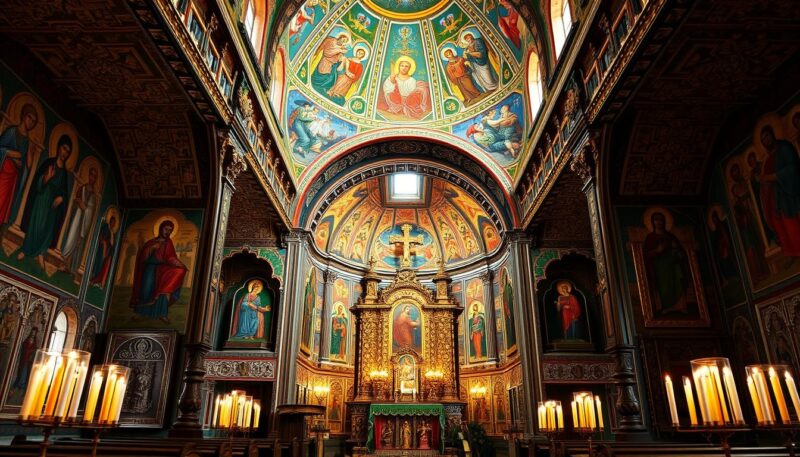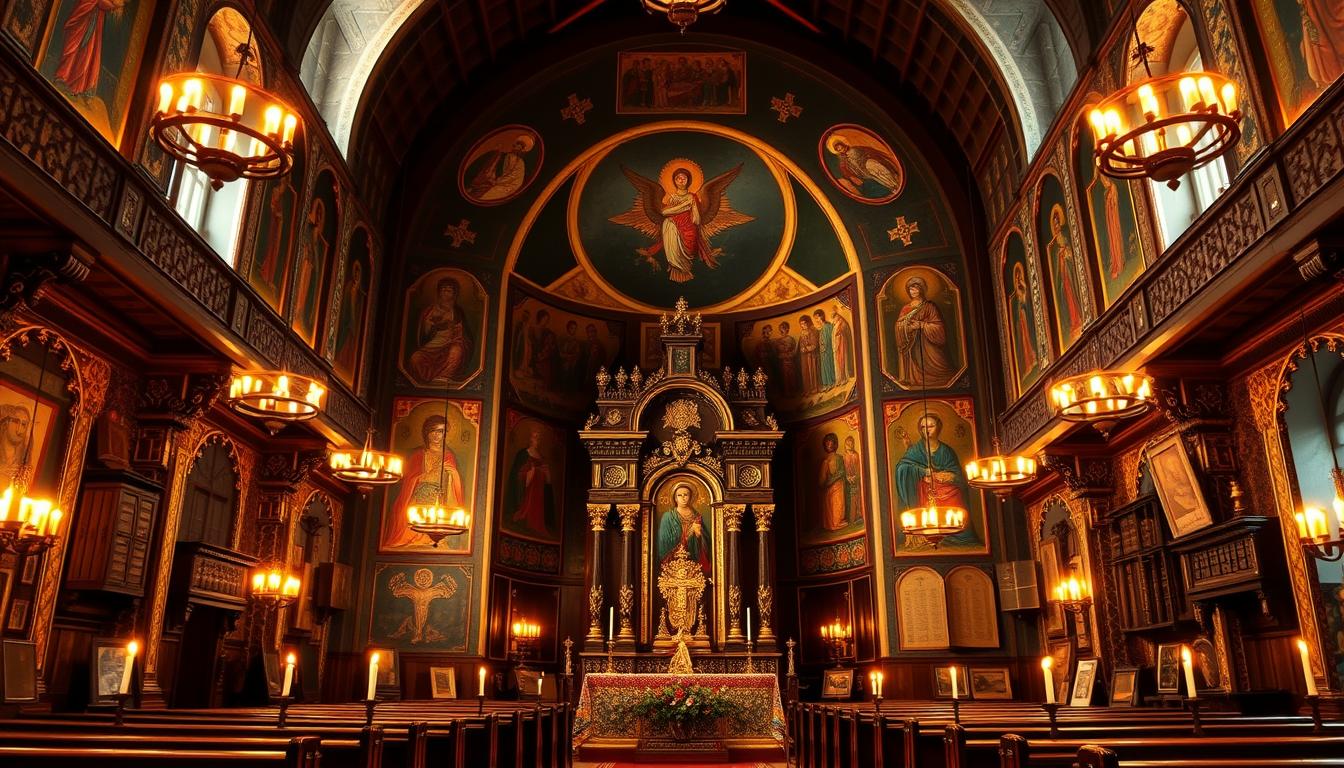Welcome to an exploration of one of the oldest and most distinctive branches of Christianity: the Ethiopian Orthodox Tewahedo Church. With roots tracing back to the 4th century AD, this ancient religious community has a rich and vibrant history intertwined with the cultural identity of Ethiopia. Not only does it encompass unique doctrines and a distinct liturgical tradition, but it also plays an integral role in the lives of approximately 44% of Ethiopia’s population. As you delve into this article, you’ll uncover the fascinating journey of the Ethiopian Orthodox Tewahedo Church, learn about its theological foundations, and discover the various practices that make it stand apart from other denominations in the broader framework of Oriental Orthodoxy. Whether you’re planning a visit to Ethiopia or just looking to expand your knowledge of Ethiopian Christianity, this article will provide valuable insights that highlight the significance of this remarkable church in both historical and contemporary contexts.
History of The Ethiopian Orthodox Tewahedo Church
The Ethiopian Orthodox Tewahedo Church has a rich and multifaceted history deeply rooted in the Christianization of the Kingdom of Aksum. This church evolved through significant events and figures that shaped its foundation and growth. As you explore its past, you will discover how its early beginnings laid the groundwork for a flourishing Christian community in Ethiopia.
Early Beginnings and Evangelization
The initial emergence of the Ethiopian Orthodox Tewahedo Church dates back to the 4th century, a time marked by the enthusiasm of early Christian evangelists. Notably, figures such as St. Frumentius played a pivotal role. His efforts to spread Christianity culminated in the baptism of King Ezana, thereby establishing Christianity as the state religion around the year 330. This monumental event not only marked the start of Ethiopian Christianity but also laid the foundation for a significant historical influence that continues to resonate today.
Development and Influences
As centuries passed, the Ethiopian Orthodox Tewahedo Church underwent various transformations influenced by historical factors. The church developed its unique theological stance known as Miaphysitism, which asserts that Jesus Christ embodies both divinity and humanity in one nature without separation. This belief system distinguished the Ethiopian Church from other Christian traditions, particularly following the schism brought about by the Council of Chalcedon in 451. During the subsequent centuries, the church experienced periods of isolation, leading to syncretism with local customs and traditions in Ethiopia.
The church’s history was further shaped by a series of challenges, including resistance faced during the 17th century and during Mussolini’s invasion in the late 1930s. Despite these challenges, the Ethiopian Orthodox Tewahedo Church maintained its practices, incorporating ancient manuscripts and texts into its liturgy, demonstrating resilience throughout shifting historical contexts.
Modern Evolution and Autonomy
Entering the modern era, the Ethiopian Orthodox Tewahedo Church solidified its autonomy in 1959, ending its administrative dependency on the Coptic Orthodox Church of Alexandria. This development allowed the church to establish its leadership structure independent of external control. Today’s community reflects a vibrant faith with approximately 36 to 51 million adherents, rooted in centuries of tradition, devotion, and a profound connection to their ancestral heritage. The headquarters located in Addis Ababa serves as a center for spiritual guidance, while millions continue to participate actively in its religious practices.
Beliefs and Doctrines of The Ethiopian Orthodox Tewahedo Church
The Ethiopian Orthodox Tewahedo Church (EOTC) possesses a rich tapestry of theological beliefs and practices that have evolved over centuries, deeply rooted in the cultural and spiritual landscape of Ethiopia. Understanding these elements reveals how the church’s teachings and rituals reflect its historical significance and enduring influence among its approximately fifty-six million adherents, collectively known as Me’emenan.
Theological Foundations
The theological beliefs of the EOTC revolve around the central doctrine of Miaphysitism. This concept signifies that Jesus Christ has one united nature that encompasses both divine and human qualities. The church teaches the importance of the Holy Trinity, affirming the co-eternality of the Father, Son, and Holy Spirit. This perspective stands in contrast to the dyophysite view established at the Council of Chalcedon in 451 CE. The church emphasizes the unity of the body of Christ as expressed in Ephesians 4:4-5, which plays a vital role in shaping its community dynamics and beliefs.
Help of Sacred Texts and Scriptures
The EOTC regards its sacred texts as crucial resources for understanding and guiding its faith journey. The biblical canon recognized by the church includes several unique scriptures that contribute to its distinctive theological framework. These texts not only provide insights into God’s nature and plan for humanity but also serve as a foundation for church teachings and moral directives. The Nicene-Constantinopolitan Creed, accepted by the EOTC, reiterates the belief in one, holy, universal, apostolic church, reinforcing the authority of these sacred texts in the lives of believers.
Spiritual Practices and Rituals
Church customs and rituals play an essential role in the spiritual lives of adherents. The EOTC has a rich tradition of fasting practices, which deeply influence both individual and communal spirituality. These fasting periods, often observed with great dedication, are seen as opportunities for spiritual growth and renewal. The architectural design of Ethiopian churches further enriches these spiritual experiences, with unique structures reflecting a profound connection to their theological beliefs. The various types of crosses used within the church not only symbolize faith and devotion but also convey blessings that encompass health, grace, and protection from evil. The significance of these rituals and symbols underscores the importance of tradition in nurturing the faith of the Me’emenan community.

| Theological Aspect | Description |
|---|---|
| Miaphysitism | Belief in the one united nature of Christ that is both divine and human. |
| Holy Trinity | Affirmation of the co-eternality of the Father, Son, and Holy Spirit. |
| Biblical Canon | Comprises unique scriptures integral to EOTC teachings. |
| Fasting Practices | Customs that foster spiritual growth and community solidarity. |
| Cross Symbolism | Represents blessings and the essence of faith, featuring various designs. |
Conclusion
The Ethiopian Orthodox Tewahedo Church stands as a testament to the rich tapestry of ancient Christian traditions intertwined with the cultural heritage of Ethiopia. From its early beginnings in the 1st century CE, the church has nurtured distinct religious traditions that resonate deeply within Ethiopian society. Its unique theological perspectives and the preservation of sacred texts have ensured that spiritual rituals remain vibrant and meaningful for both faithful adherents and the broader community.
Throughout the centuries, the Ethiopian Orthodox Tewahedo Church has displayed remarkable resilience. Navigating through periods of persecution, the church has maintained its identity, especially following the recognition of its autonomy in 1959. This determination to sustain its traditions while welcoming the modern evolution reflects the church’s commitment to remaining a vital part of Ethiopia’s socio-religious landscape and global Christianity.
As you explore the intricacies of the Ethiopian Orthodox Tewahedo Church, you’ll discover how its historical significance and dynamic practices contribute to the larger narrative of faith. The church’s ongoing journey promises to keep its spiritual rituals and cultural heritage alive, ensuring that future generations understand the profound impact of this ancient institution on the fabric of their identity.

